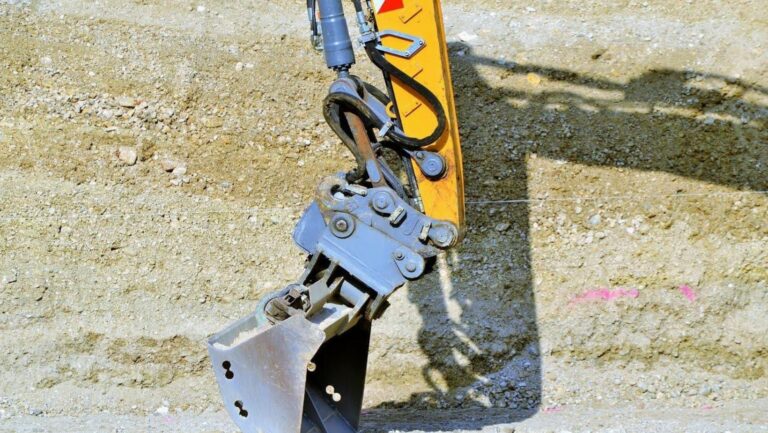Transforming a landscape lawn can breathe new life into any outdoor space. Whether it’s a tired yard in need of a refresh or a blank canvas waiting for creativity, a remodel can enhance both aesthetics and functionality. With the right approach, homeowners can create a lush, inviting environment that complements their lifestyle.
In today’s world, outdoor spaces are more than just yards; they’re extensions of the home. A well-designed landscape not only boosts curb appeal but also provides a sanctuary for relaxation and recreation. From choosing the right plants to incorporating hardscapes, every detail matters in achieving a stunning transformation. Embracing modern trends and sustainable practices can lead to a lawn that’s not just beautiful but also eco-friendly.
Table of Contents
ToggleOverview of Landscape Lawn Remodel
Landscape lawn remodel involves transforming outdoor spaces to improve aesthetics and enhance functionality. Homeowners often choose this option to breathe new life into existing yards or to create appealing environments in untended areas. Key aspects of a lawn remodel include the selection of suitable plants, the integration of hardscapes, and the application of sustainable practices.
Homeowners benefit from increased curb appeal and a relaxing atmosphere through carefully curated landscapes. New designs consider modern trends, such as native planting and xeriscaping, to promote sustainability and reduce water usage. Such approaches not only beautify properties but also support local ecosystems.
Planning a landscape lawn remodel requires consideration of various elements. Choosing the right plants involves assessing environmental factors, like soil type and sunlight exposure. Incorporating hardscapes, such as patios, walkways, and retaining walls, creates structure and aids in managing water drainage.
Ultimately, a well-executed landscape lawn remodel results in an inviting space that reflects personal style while offering practical benefits. Careful planning and investment in quality materials contribute to a successful transformation that meets both aesthetic desires and environmental responsibility.
Key Benefits of Remodeling Your Lawn

Remodeling a lawn provides numerous advantages that elevate outdoor spaces. Two significant benefits include enhanced aesthetics and increased property value.
Enhanced Aesthetics
A remodel transforms dull or unkempt lawns into visually appealing outdoor retreats. Thoughtful plant selection creates vibrant color palettes, while diverse textures add interest. Incorporating hardscapes, such as patios and walkways, introduces structure and functionality. Modern design trends focus on symmetry and balance, leading to harmonious landscapes. Integrating features like water elements or lighting further elevates the aesthetic appeal, making outdoor spaces inviting for relaxation and entertainment.
Increased Property Value
A well-designed lawn contributes directly to property value. According to the National Association of Realtors, landscaping improvements can yield a return on investment of up to 100%. Curb appeal significantly affects first impressions, making properties more appealing to potential buyers. Enhancements, such as native plants and sustainable practices, promote eco-friendliness, attracting environmentally conscious buyers. Ultimately, a well-executed landscape lawn remodel boosts market value, ensuring homeowners reap financial benefits aligned with their investment.
Popular Design Trends
Recent trends in landscape lawn remodels emphasize sustainability and functionality. Homeowners increasingly seek designs that are both aesthetically pleasing and environmentally friendly.
Xeriscaping
Xeriscaping prioritizes water-efficient landscaping. This practice reduces the need for irrigation, making it ideal for arid regions. Key features of xeriscaping include:
- Drought-resistant plants: Selecting species adapted to dry conditions decreases water usage.
- Mulching: Using organic or inorganic materials retains soil moisture and reduces weed growth.
- Rock gardens: Incorporating rocks and gravel enhances visual appeal while minimizing water needs.
Xeriscaping creates beautiful landscapes while conserving water resources.
Native Plant Landscaping
Native plant landscaping utilizes plants indigenous to a specific region. This approach promotes biodiversity and supports local ecosystems. Benefits include:
- Low maintenance: Native plants typically require less care and watering once established.
- Wildlife habitat: These plants attract essential pollinators, such as bees and butterflies.
- Soil adaptation: Native species are better adapted to local soil conditions, increasing their chances of survival.
Incorporating native plants creates harmonious landscapes that thrive without excessive intervention.
Step-by-Step Remodeling Process
The landscape lawn remodeling process involves careful planning, material selection, and precise installation techniques. Following these steps ensures a successful transformation of outdoor spaces.
Planning and Design
Planning starts with assessing the existing landscape, identifying areas in need of improvement. Homeowners should consider their preferences, usage patterns, and environmental conditions. Horticultural experts recommend sketching a layout, highlighting plant placements, and hardscapes such as patios and walkways. Utilizing software tools can optimize design visualization and allow for adjustments before implementation. Prioritize sustainability by selecting native plants that thrive in the local ecosystem, reducing water usage and maintenance.
Choosing the Right Materials
Material selection plays a crucial role in the durability and aesthetic appeal of the remodel. Hardscapes such as stone, brick, and concrete should match the overall design theme while providing functionality. Select weather-resistant materials for longevity and minimal upkeep. For planting areas, choose high-quality soil and mulch to promote healthy plant growth and moisture retention. Incorporating eco-friendly options, such as permeable pavers or recycled materials, contributes to sustainability while enhancing the landscape’s visual appeal.
Installation Techniques
Installation requires precision and attention to detail for optimal results. Begin by preparing the site, which includes clearing debris and leveling the ground where necessary. Ensure proper drainage by grading the landscape to redirect water away from structures. When planting, dig holes that accommodate root systems and space plants appropriately to promote healthy growth. During hardscape installation, follow manufacturer guidelines for laying materials to ensure stability and proper alignment. Regular maintenance after installation, such as watering and mulching, supports the long-term health of both plants and hardscapes.
Maintenance Tips for a Successful Remodel
Regular maintenance plays a critical role in preserving the beauty and functionality of a landscape lawn remodel. Following a few key practices ensures the longevity of plants and hardscapes while promoting a healthy ecosystem.
- Watering Techniques
Water deeply and infrequently to encourage root growth. Set up a drip irrigation system for efficient water usage, reducing evaporation and runoff. Always adjust according to seasonal needs and rainfall.
- Mulching Practices
Apply organic mulch around plants to retain moisture, suppress weeds, and regulate soil temperature. Use a 2-3 inch layer of mulch, keeping it away from plant stems to prevent rot.
- Fertilization Schedule
Fertilize during the growing season with a balanced, slow-release fertilizer. Conduct soil tests to determine nutrient needs and avoid over-fertilization, which can harm plants and nearby water systems.
- Pruning Techniques
Prune plants to remove dead or damaged growth and to shape them for better air circulation and light penetration. Choose late winter or early spring for pruning most flowering shrubs and trees before their active growth begins.
- Weed Management
Regularly inspect for weeds and remove them promptly by hand or with tools. Implement a layer of landscape fabric and mulch to minimize weed growth and lessen maintenance efforts.
- Pest Control Methods
Monitor for pests and use integrated pest management strategies. Encourage beneficial insects like ladybugs while employing organic pest control methods when necessary.
- Seasonal Cleanups
Conduct seasonal cleanups by removing debris, leaves, and dead plants. This practice prevents disease and pests from accumulating, maintaining a tidy and healthy lawn.
- Hardscape Care
Inspect and clean hard surfaces, such as patios and walkways, for moss or algae buildup. Regular power washing helps maintain aesthetic appeal and extend the life of hardscape materials.
- Soil Aeration
Aerate compacted soil at least once a year to enhance air and water penetration. This practice supports deep root growth and promotes healthier plants.
- Plant Rotation and Diversity
Incorporate plant rotation and diversity to prevent disease and pest buildup. Diverse plant selections enrich the ecosystem and improve resilience to environmental stresses.
Implementing these maintenance tips ensures a thriving landscape lawn remodel that enhances both aesthetic appeal and ecological health.
Transforming a landscape lawn offers numerous rewards that extend beyond mere aesthetics. It creates a welcoming environment that reflects personal style while enhancing property value. By prioritizing sustainable practices and thoughtful design, homeowners can cultivate outdoor spaces that are both beautiful and functional.
Regular maintenance is key to preserving the vitality of a remodel, ensuring that the landscape remains vibrant and healthy. With careful planning and execution, a landscape lawn remodel can become a cherished retreat that contributes positively to the ecosystem and the homeowner’s enjoyment. Embracing these principles will lead to a stunning outdoor space that stands the test of time.



